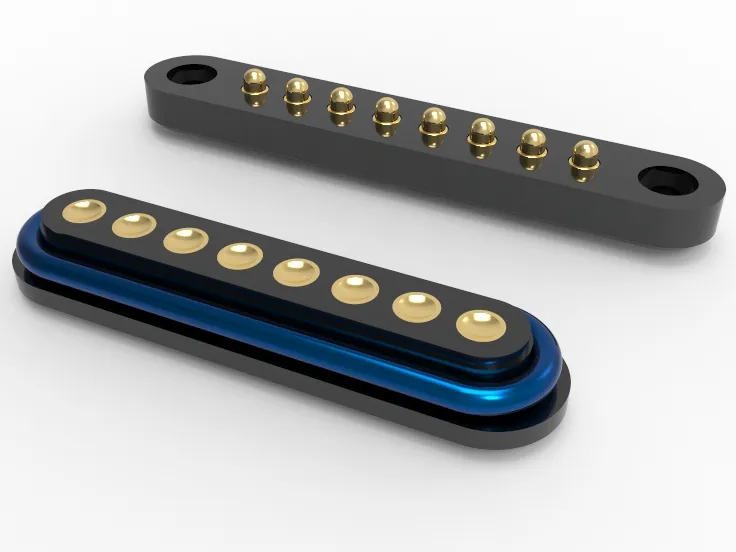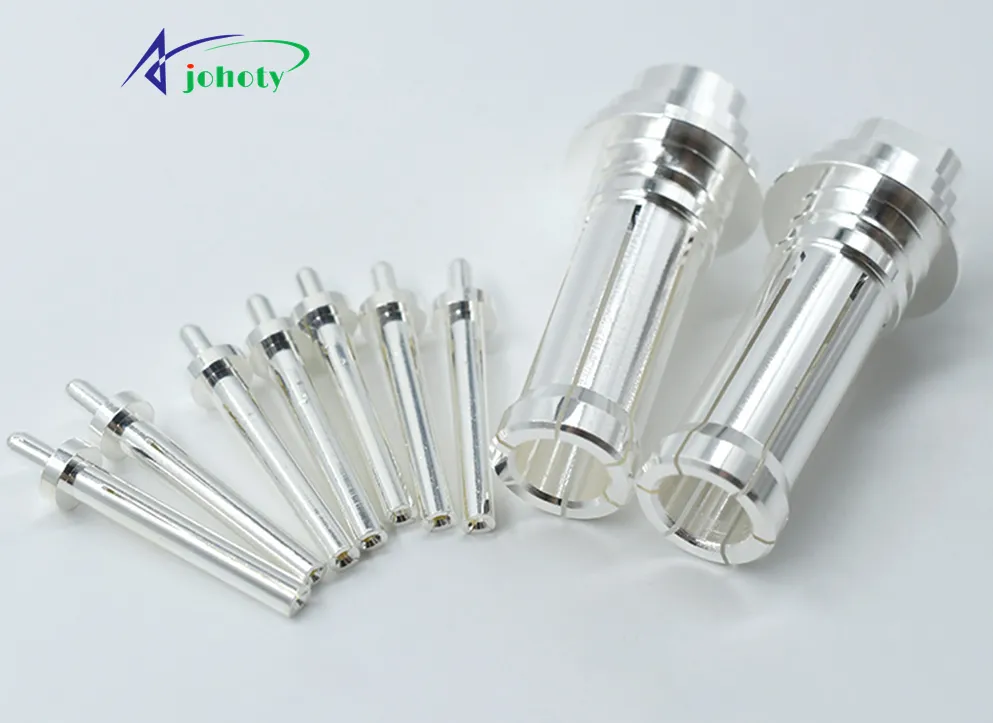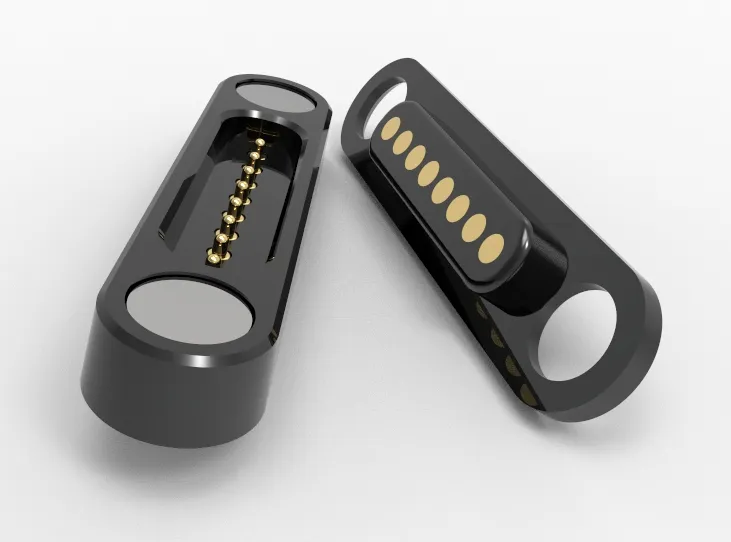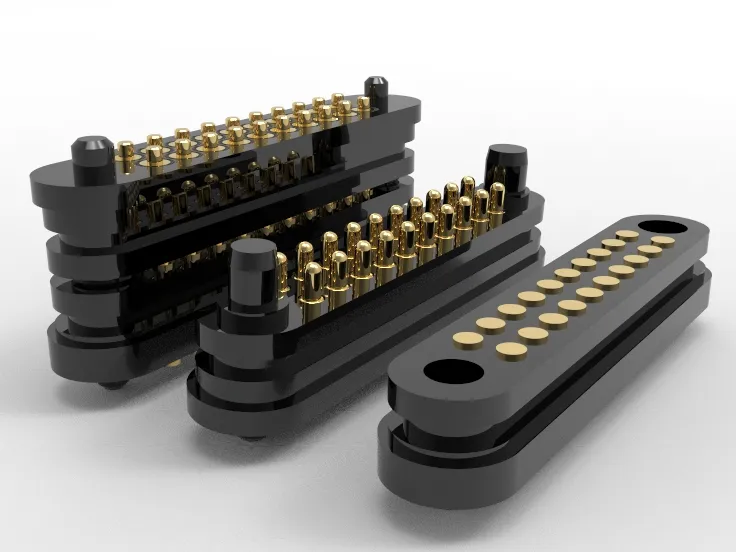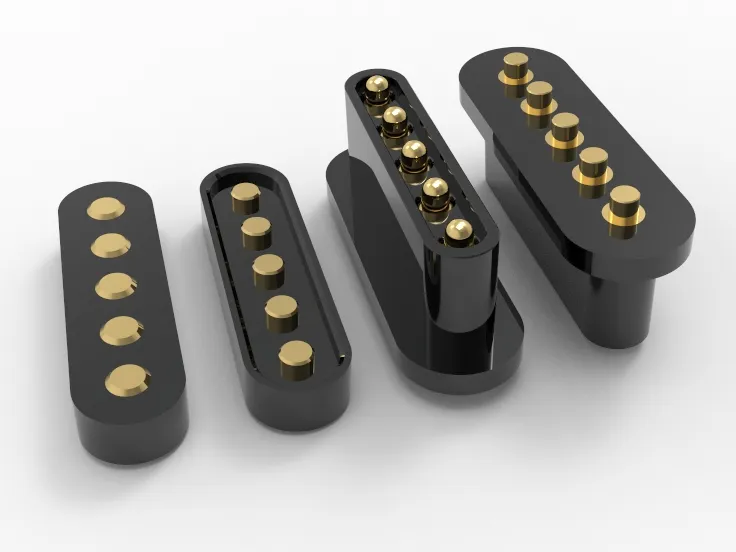What Is Electroplating? Boosts Pogo Pin Performance: 5X Durability, 5mΩ Resistance. NASA-grade Corrosion Resistance, Uses in 5G/Medical/Space.
Introductions
If you are experiencing a temperature fluctuation of ± 15% in contact resistance? Does the coating experience black ring failure after 500 insertions and removals? The supplier claims to comply with ASTM standards, but on-site failure rate is still >3%? So what you need is not to change the supplier, but to re-understand how electroplating rewrites pogo pin failure. Then, what is electroplating?
Electroplating technology, as a key process for improving pogo pin performance, has become an essential tool for design engineers. Poor contact, oxidation or wear of connectors often exacerbate system efficiency, and even directly affect product reliability and stability. In high-frequency automated testing, wireless charging systems, and complex electronic interfaces. The electrical conductivity and corrosion & wear resistance of pogo pins are extremely important.
We will provide a detailed answer on what is electroplating and introduce practical applications of pogo pins. Engineers will learn how to optimize designs, improve product performance, extend service life, and avoid failures caused by poor contact. Let’s use electroplating or composite electroplating to improve the performance of pogo pins while further promoting innovation and development in electronic products.
What Is Electroplating?How can electroplating improve the performance of Pogo Pins?
Why are top engineers paying attention to the electroplating layer of pogo pins?
In the world of connectors, 90% of the performance difference of Pogo Pins depends on the thin to micrometer plating layer. As a technical expert at Johoty, I want to reveal 5 revolutionary electroplating technologies that most specifications won’t tell you. These technologies are changing: the 10-year lifespan of medical implant devices and the extreme environmental stability of space grade connectors. Micro impedance control of 5G testing probes, etc.
Palladium nickel alloy (PdNi): the terminator of gold plating?
Traditional hard gold: HV200-250, Palladium nickel alloy: HV500-600。 In the case of wireless charging for smartwatches, Johoty’s PdNi coating increased the insertion and extraction life from 10,000 times to 300,000 times, while reducing costs by 35%. Our secret lies in the patented nickel content control of 20-25% and nanoscale grain refinement process.
Rhodium Coating: The Ultimate Solution for Corrosive Environments
When German medical equipment manufacturers recalled their products due to corrosion from body fluids, Johoty’s 0.3 μm rhodium coating solution was approved. 1,000 hours of salt spray testing, 200 cycles of high-pressure sterilization, and 5 years of simulated body fluid immersion. The low stress rhodium plating process we developed has solved the problem of traditional rhodium coatings being prone to brittleness and cracking, becoming a key breakthrough.
Silver plating+molecular sealing technology: a new benchmark for high current applications
In the field of electric vehicle battery testing, Johoty’s innovative solution will increase the current carrying capacity by three times, stabilize the contact impedance at<0.5mΩ, and extend the anti discoloration life to 5 years. The core technology includes 99.99% pure silver deposition, self-assembled monolayer SAM protection, and a 0.05 μm gold top layer.
Nickel phosphorus alloy (NiP): an underestimated high-performance choice
Johoty’s test data shows that the wear resistance is 8 times higher than that of standard nickel layers. In terms of corrosion resistance, after 2000 hours of neutral salt spray testing, the contact impedance still remains<10m Ω after 100000 insertions and removals. Suitable for the vibration environment of industrial automation equipment and the anti-corrosion requirements of marine instruments.
Gradient composite coating: Johoty’s patented technology
Traditional coating, single material, clear interface, stress concentration. Johoty gradient coating, gold at the top, palladium in the middle, nickel at the bottom, nanoscale gradient transition, stress gradient release. Tested advantages include a 40% reduction in insertion and extraction force, a 300% increase in coating adhesion, and a 5-fold improvement in thermal cycling performance.
Why do top global companies choose Johoty electroplating solutions?
The precision of coating thickness control is within ± 0.05μm, and the industry standard is ±0.2μm. The porosity is controlled at <3/cm², which is a medical grade standard. Customized support for 8 types of metal composite coating designs, with SEM+EDS analysis provided for each batch.
Process Flow Distribution and Technical Highlights, What Is Electroplating?
Why is electroplating, the key to the performance of Pogo Pins?
Pogo pins must meet three strict requirements simultaneously: ultra-low contact resistance, typically 30m Ω, extreme humidity, salt spray, and corrosion resistance in acidic and alkaline environments. The test socket application requires a lifespan of over 200000 insertions and removals.
The electroplating process solves these problems by depositing a micrometer sized metal layer on the surface of the brass/stainless steel substrate: a nickel layer of 3-10 μ m, a diffusion barrier, and enhanced mechanical strength. The gold layer is 0.1-3μm or higher, providing ultra-low contact resistance. An optional palladium layer can replace expensive gold plating and increase hardness by 2 times.
Analysis of 5 Disruptive Electroplating Processes
Pulse Reverse Plating
By periodically reversing the direction of current and dissolving protruding areas, atomic level flat deposition can be achieved. The porosity is reduced to<0.5%, while the traditional process is>5%, making it suitable for 5G testing probes for high-frequency signal transmission. The Johoty parameter has a frequency of 200Hz and a forward/reverse time ratio of 5:1.
Selective Plating
Only the needle tip in the contact area with a thickness of+0.5mm is coated with gold, while the remaining part retains the nickel layer, reducing costs by 30-50%. Gold layer thickness can be accurately controlled to ± 0.05 μm. Commonly used in TWS earphone charging contacts, with a output of 2 million pieces.
Composite Coating Technology Ni/Au/Pd Multilayer
Nickel bottom layer 5 μ m, preventing copper zinc diffusion, internal stress<10MPa. Palladium intermediate layer, 1 μ m, replaces thick gold layer, with a hardness of 400HV and a threefold increase in wear resistance. The gold surface is 0.1 μ m, ensuring contact resistance and purity of 99.99%.
Nanosealing Technology
The traditional gold plating layer has micro pores, which lead to corrosion failure. After gold plating, nano level organic silane treatment is added. The salt spray test time ranges from 24 hours to 500 hours, with a contact resistance fluctuation of less than 5%, compared to the traditional process of 20%.
Laser-Enhanced Plating
Laser local heating at 50-80 ℃ increases the deposition rate, and the uniformity of gold layer thickness reaches ± 2%, while traditional processes achieve ± 10%. Applicable products: Miniature ejector pin, diameter<0.3mm
3 Major Technical Barriers of Johoty’s Electroplated Pogo Pins
In terms of thickness control accuracy, an X-ray fluorescence thickness gauge with an accuracy of 0.01 μ m is used. Ultra low porosity, 100% full inspection by SEM scanning electron microscope. Customized solution, adjusted according to customer needs: medical grade, compliant with ISO 13485, no nickel leakage. Automotive grade, passed USCAR-2 vibration test. Military grade, operating at extreme temperatures ranging from -55℃ to 125℃.
Pogo Pin Application, What Is Electroplating?
Lifeline connection of cardiac pacemaker
Implantable medical devices require absolutely stable signal transmission, and any poor contact can lead to fatal risks. Johoty’s electroplating solution is a medical grade gold coating with a thickness of 0.8 µm. Maintain a contact resistance of 15mΩ in a bodily fluid environment according to ASTM B488 Class 1.5 standard. The latest pacemakers often use this solution, and Johoty provides pogo pins that comply with ISO 13485 certification, including biocompatibility reports.
Vibration-proof connection of space satellites
Cold welding risk in vacuum environment, withstand 100G impact during launch phase. Nickel based+hard gold composite coating, 50µ” Au over 100µ” Ni, special spring design to prevent micro vibration failure. Through 2 million thermal cycles in a space telescope, the contact force drift is less than 3%. Johoty provides spring needles for Mars probes to French guests.
The nerve endings of new energy battery packs
The current requirement is that a single needle can continuously carry 15A current, with a silver coating thickness of 3 µ m, which is the industry standard of 1.5 µm. Graphene doping is added to improve heat dissipation. The temperature rise at 15A for ordinary silver plating is +28°C, with a lifespan of 50,000 cycles. But Johoty’s solution has a temperature rise of +9°C and a lifespan of 200,000 cycles.
Tactile feedback of surgical robots
Minimally invasive surgery requires the transmission of a 0.1N level force feedback signal and a miniaturized design with a diameter ≤0.3mm. Johoty adopts laser engraved multi-level spring structure with nano gold coating Ra<0.05 µm. The signal delay was reduced from 8ms to 0.5ms, ultimately obtaining the customer’s AVL
The Secret of the Pantograph in Maglev Trains
The challenge at 400km/h is arc erosion, which requires withstanding 200 micro vibrations per second. Johoty adopts silver tungsten composite coating, 80% Ag+20% W, self-cleaning contact design. The maintenance cycle of the maglev line data has been extended from 2 weeks to 6 months, reducing energy loss by 12%.
Invisible charging of mobile phones
Ultimate pursuit of consumer electronics, 0.2mm ultra-thin magnetic interface, 100% hidden design. Johoty’s diamond-like carbon (DLC) coating with a 12 point circular array layout. The success rate of blind insertion in user experience has increased from 85% to 99.7%.
Coating Selection of Pogo Pins, What Is Electroplating?
Incorrect coating selection can lead to contact failure, signal attenuation, and even equipment damage. The role of electroplating:
- Gold (Au) coating: ultra-low resistance<50m Ω, extremely strong oxidation resistance, suitable for high-frequency signal transmission, 5G equipment, testing probes.
- Nickel (Ni) coating: enhances hardness, prevents oxidation of copper substrate, and is often used as a bottom coating.
- Palladium (Pd) or palladium nickel (PdNi) plating: more wear-resistant than gold, lower cost, suitable for smart wearable devices with high insertion and extraction times.
- Silver (Ag) coating: It has the best conductivity, but is prone to sulfurization and needs to be used in conjunction with protective coatings, such as high current connectors.
Coating selection for different applications
- Consumer electronics, TWS earphones, smartwatches: miniaturization, high plug-in life of over 100,000 times, anti-oxidation. Hard Gold 0.2-0.5 μm+nickel bottom layer, balancing cost and performance.
- Automotive electronics, charging stations, and onboard sensors: resistant to high temperatures, vibration, and salt spray corrosion. Palladium nickel 3-5 μm+nickel bottom layer, more resistant to environmental corrosion than gold.
- Medical equipment, wearable monitoring devices, endoscopes: biocompatible, stable contact. Pure gold above 1 μm, with no risk of nickel precipitation.
- Industrial automation, testing fixtures, robot connectors: ultra-low resistance, wear-resistant. Composite coating Au+Pt, the best choice for extreme environments.
Conclusions:
Are you looking for pogo pins with high reliability, long lifespan, and ultimate conductivity? I believe you are familiar with what is electroplating, and Johoty’s advanced electroplating technology is your best choice! Industry leading coating uniformity and nanometer level precision ensure stable contact resistance for each pogo pin. Exclusive wear-resistant alloy coating AuCo/PdNi, with a 300% increase in contact life, far exceeding industry standards. Extreme environmental adaptability, passed 1,000 hour salt spray test, certified at 200℃. Quick response and flexible customization, providing samples within 2 weeks, supporting small-scale trial production.
What type of coating does your application require? 5G/high-frequency testing? Ultra-low resistance hard gold coating with 0.5 μm Au. Automotive electronics? Corrosion resistant palladium nickel alloy PdNi 3 μm. Medical equipment? Biocompatible pure gold coating with 1 μm Au. Industrial automation? Composite coating Au+Pt, ultimate durable solution.
After adopting Johoty gold cobalt coating, The charging contact life of TWS earphones has exceeded 150,000 times, and the customer complaint rate has returned to zero. Johoty CFT team will provide you with customized electroplating solutions within 24 hours, allowing us to gain a deeper understanding of what is electroplating and work together to create a zero-defect connection experience!





